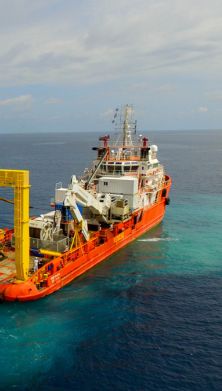The growth of the carbon markets
What are the carbon markets?
Carbon markets aim to mitigate climate change by turning greenhouse gases (GHG) into commodities that can be bought or sold. There are many carbon markets around the world, including in the UK, Canada, China, New Zealand, South Korea, Japan, and California.
Carbon markets fall into two main types – compliance and voluntary.
Compliance markets are established and regulated by governments, or multi-government bodies, and are generally targeted towards heavy-emitting industries. They usually follow one of two approaches. The EU’s Emissions Trading System (ETS) was the world’s first major carbon market and is an example of a cap-and-trade system. This sets an overall limit or ‘cap’ on emissions for sectors covered by the scheme, with emissions allowances distributed (either for free or through auctions) that are equivalent to the cap. Entities must hold an allowance for every ton of GHG they emit. Those that emit more than their permitted amount can buy allowances from those whose emissions are below their limit.
Under a baseline and credit system, such as Australia’s Safeguard Mechanism, an emissions level is set for individual regulated entities, and those that reduce their emissions below this level receive credits they can sell to entities that have exceeded their limit.
In addition to the compliance markets, the growing voluntary carbon markets (VCM) allow businesses or organizations to offset their climate emissions by buying carbon credits of their own volition. Credits are purchased from verified projects that remove, reduce, or sequester carbon emissions, and each is equivalent to a ton of carbon dioxide. These projects could be nature-based climate solutions, such as reforestation, peat preservation, or mangrove management, or engineered, technology-based solutions, including direct air capture (which extracts carbon dioxide from the atmosphere), carbon capture utilization and sequestration (CCUS), or carbon capture and storage (CCS).
The voluntary carbon market is estimated to be worth around US$2bn and is projected to reach between $10bn and $40bn by 2030 according to some estimates [1], or as much as $100bn by others [2].
Why are the carbon markets of interest to business?
The Paris Agreement calls for global warming to be kept to no more than 1.5°C above pre-industrial levels. At current levels this means emissions need to be reduced by 45% by 2030 and reach Net Zero by 2050 [3], but the UN warns national climate plans fall short of this.
“As the drive to decarbonize gathers pace, more and more businesses are making sustainability pledges, with half the world’s largest companies now committed to Net Zero,” says Gabrielle Durisch, Chief Sustainability Officer at Allianz Commercial. “Businesses are operating in a heightened regulatory environment when it comes to sustainability disclosure. With legislation evolving and stakeholder pressure mounting, companies face financial and reputational risk if their due diligence is found wanting.”
While Durisch stresses businesses should always prioritize the reduction or avoidance of carbon emissions in their value chains over offsetting, there remains a level of residual emissions that cannot be avoided, reduced, or replaced, particularly in hard-to-abate sectors.
“VCM can be a complementary tool for helping businesses meet their sustainability targets while technology advances and industries adapt to lower-carbon practices,” Durisch notes.
As well as helping to avoid or remove emissions from the atmosphere, the VCM can provide the financing needed to launch new climate-action projects. It has the potential to improve the quality of life in local communities, particularly in the Global South, creating revenue streams, supporting jobs and growth, and accelerate the roll-out of climate technologies and nature-based solutions
What are some of the trends and challenges in these markets?
Compliance carbon markets are expanding around the world as governments seek to meet their climate commitments. There are now 36 emissions trading schemes in operation worldwide, with 14 under development, and eight under consideration, according to the International Carbon Action Partnership [4].
Some existing plans are expanding to include new sectors or are increasing stringency. The EU has widened its ETS to include the maritime sector and introduced a new scheme called ETS2, which will cover fuel combustion in the building, transportation, and other smaller sectors. China’s ETS is expected to expand from the power sector to encompass cement, steel, and aluminum production by the end of 2024.
The International Civil Aviation Organization’s offsetting scheme, CORSIA (the Carbon Offsetting and Reduction Scheme for International Aviation), was the first single-sector-led global market-based measure in the climate change field. Initially voluntary, it will become mandatory from 2027.
Despite the growth of the carbon markets, they have attracted some criticism. Carbon credits are viewed by their detractors as a disincentive that could prevent companies from taking more meaningful climate action. Others point to reports claiming carbon offsets are ineffective and the risk of ‘double counting’ (when two entities claim the same carbon credit).
In the VCM, which is unregulated and has differing standards, the credibility of some climate projects’ credentials has been questioned, raising the prospect of greenwashing allegations. Concerns have been also raised about the alleged impact of carbon projects on vulnerable or indigenous communities, including displacement.
“These concerns have led to calls for higher integrity and greater transparency in the market, and we believe regulation is likely in the future,” says Funké Adeosun, Global Transition Solutions Director, Allianz Commercial. “In the US, the Biden administration issued policy guidelines to ensure the high integrity of VCM. New guidelines designed to foster high integrity have also been issued by the Voluntary Carbon Markets Initiative (VCMI) and the Integrity Council for the Voluntary Carbon Market (ICVCM), which has developed 10 Core Carbon Principles (CCP) as a global benchmark. This should introduce some much needed clarity and rebuild confidence in the VCM. Registries are seeking the CCP stamp.”
How is Allianz Commercial involved in the carbon markets space?
“Although a lack of maturity in the VCM has presented some challenges, we believe high-integrity carbon credits have a positive role to play in the Net Zero transition,” says Durisch. “We know our clients are investing in, or considering investing in, climate projects, and we are ready to work with them as a trusted insurance partner to explore solutions that support their carbon journey, whether that is sustainability solutions, like the carbon markets, climate technologies such as carbon capture and storage, or resilience measures such as nature-based solutions.”
To support clients in navigating the VCM, Allianz Commercial recently launched a pilot project with Sylvera, an end-to-end carbon data platform that offers the tools, data, and assurance needed to make effective carbon credit purchase decisions. The platform pools external data from offset purchasers and benchmarks purchases based on three key areas – additionality (i.e. if the project did not exist, would the carbon dioxide still have been emitted?), quality, and permanence.
“Through this partnership, we can support clients who have already purchased voluntary offsets or removals as part of their mid-term decarbonization journeys,” says Adeosun. “The market is not yet mature, so clients might have limited understanding of which offsets are the highest quality. By combining our knowledge of risk management with Sylvera’s platform, we can provide clients with tailored support in navigating the growing number of carbon projects and the carbon credits they generate and help them devise a roadmap to carbon neutrality or Net Zero as the case may be.”
In light of the EU ETS expansion to include shipping, Allianz Commercial is also exploring solutions that could support the maritime sector as it faces heightened sustainability pressures. “While increasing uncertainty can mean a change in clients’ risk profiles, we are seeking to develop coverages that can respond to new climate risks and regulations,” says Adeosun. “One area we are exploring is a Marine Hull solution that could support our clients in the event of a fortuity.”
The insurer’s role in this market could be critical for risk mitigation and facilitating scalability.
“By transferring certain risks to insurers, companies can minimize and mitigate their exposures to the carbon markets,” says Isa Ennadifi, Head of Sustainability Solutions, Alternative Risk Transfer, Allianz Commercial. “Sharing risk also helps increase investor appetite as it adds a layer of due diligence and alignment. If a project developer can demonstrate certain risks have been transferred to insurers, it is more likely to attract investment.”
Allianz is looking to support the carbon markets and develop innovative solutions by collaborating with all relevant stakeholders and maintaining an open dialogue around risk mitigation and insurance risk transfer.
“We have started to develop delivery risks insurance cover for carbon removal projects, which aims to support investors, and are evaluating other relevant risks to further develop our support in the future. Each project will present its own challenges that could cause a project to fail. In a nature-based offset, the concern is likely to be climate risk and mitigation measures, while for an engineered solution, such as direct air capture, the main issues could be engineering risks or business interruption from a shutdown.”
The market is dynamic and evolving, notes Durisch. “We are building expertise in-house and with our partners so we can offer clients the support they need with this kind of investment. As insurers, we can help to ensure carbon projects can be implemented despite the inherent risks. We can provide project sponsors with greater planning and investment security, which ultimately contributes to the achievement of global climate targets.”
References
[1] BCG, The voluntary carbon market is thriving, January 19, 2023
[2] Morgan Stanley, Where the carbon offset market is poised to surge, April 11, 2023
[3] United Nations, For a livable climate: Net-zero commitments must be backed by credible action
[4] International Carbon Action Partnership, ICAP ETS map




















